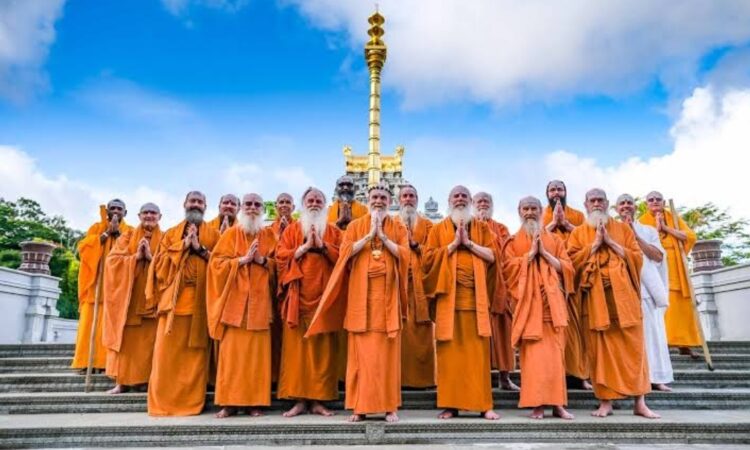
Monasteries have long been sanctuaries for those seeking a life of devotion, simplicity, and inner peace. Joining a monastery can be a transformative and fulfilling choice for those yearning for a deeper spiritual connection. This comprehensive guide aims to provide step-by-step instructions on how to join a monastery, offering insights into the process and addressing frequently asked questions about monastic life.
Understanding Monastic Life
Monasteries are religious communities that offer a structured and contemplative way of life. Before embarking on this path, it is important to gain a clear understanding of what monastic life entails. Monasteries are often associated with specific religious orders, and members commit to a life of prayer, communal living, service, and adherence to certain rules or vows. These vows may include poverty, chastity, obedience, and stability.
Choosing the Right Monastery
Selecting the right monastery is a crucial step in your journey. Each monastery has its own unique traditions, rules, and practices. Begin by researching different monasteries and exploring their specific religious orders and charisms. Visit their websites, read books about their traditions, and, if possible, attend retreats or visit in person to experience the community firsthand. Take the time to discern which monastery aligns with your spiritual beliefs and resonates with your values.
Preparing for Monastic Life
Before joining a monastery, it is essential to prepare yourself physically, mentally, and spiritually. Here are a few steps to consider:
- Reflect on your motivations: Examine your reasons for pursuing a monastic life. Are you seeking a deeper spiritual connection, a life of simplicity, or a way to serve others? Understand your intentions and ensure that they align with the purpose and commitments of monastic life.
- Strengthen your spiritual practice: Cultivate a regular spiritual practice that includes prayer, meditation, or other forms of contemplation. Developing a solid foundation will help you adapt to the rhythm and demands of monastic life.
- Simplify your life: Begin simplifying your life by decluttering your physical space and reducing unnecessary commitments. Embrace a minimalist lifestyle and detach yourself from material possessions.
- Seek guidance: Speak with spiritual mentors, clergy, or trusted individuals who can provide guidance and support during your journey. They can offer valuable insights and help you navigate the challenges of joining a monastery.
Contacting the Monastery
Once you have selected a monastery that resonates with you, the next step is to establish contact with the community. Most monasteries have websites that provide information on how to get in touch. Consider the following steps:
- Write a letter of inquiry: Craft a sincere letter expressing your interest in joining the monastery. Introduce yourself, share your spiritual journey, and explain why you believe this particular monastery is a good fit for you.
- Schedule a visit: If possible, arrange a visit to the monastery. Many monasteries offer retreats or guest programs where you can experience their way of life firsthand. This will allow you to interact with the members, participate in their activities, and get a sense of the monastery’s atmosphere.
- Attend discernment retreats: Some monasteries organize discernment retreats specifically designed for individuals exploring monastic life. These retreats provide an opportunity to deepen your understanding of the monastery and discern whether it is the right path for you.
The Application Process
After establishing a connection with the monastery and gaining insights into their way of life, you may decide to formally apply to become a member. The application process can vary among monasteries, but generally includes the following steps:
- Complete the application form: Monasteries typically have an application form that requires you to provide personal details, information about your spiritual journey, and your reasons for seeking monastic life. Fill out the form thoroughly and honestly.
- Provide references: Monasteries often request references from individuals who can vouch for your character, commitment, and suitability for monastic life. These references may include spiritual mentors, clergy members, or other trusted individuals.
- Interview with the community: As part of the application process, you may be invited for an interview with the monastic community. This allows them to get to know you better, ask questions, and assess your readiness for monastic life.
- Medical and psychological evaluations: In some cases, monasteries require applicants to undergo medical and psychological evaluations to ensure physical and mental well-being.
Postulancy and Novitiate Period
Upon acceptance into the monastery, you will enter a period known as postulancy, followed by the novitiate. These stages serve as an introduction to monastic life and provide an opportunity to discern your vocation further. The specific duration of these stages varies among religious orders but can range from several months to a few years.
During the postulancy period, you will receive instruction on monastic practices, participate in the daily routines of the community, and learn about the order’s traditions. As a postulant, you will be given guidance and mentorship by more experienced members of the community.
Upon completion of the postulancy, you may be invited to enter the novitiate, where you will deepen your commitment to the monastic life. The novitiate is a time of intense spiritual formation, study, and reflection. You may receive a religious habit and take temporary vows, such as poverty, chastity, and obedience. This period allows you to further discern your vocation and determine whether you are called to make lifelong commitments as a monk or nun.
Frequently Asked Questions
1. What are the requirements for joining a monastery?
Requirements can vary among monasteries and religious orders, but common prerequisites include a genuine desire for a life of prayer and service, good physical and mental health, and the ability to live in community and abide by the monastery’s rules and values.
2. How long does it take to become a monk/nun?
The length of the process can vary depending on the monastery and religious order. It typically takes several years, including the postulancy and novitiate periods, before an individual takes lifelong vows as a monk or nun.
3. Can I leave the monastery if I change my mind?
Yes, it is possible to leave the monastery if you decide monastic life is not for you. While the process may vary, most monasteries respect an individual’s freedom to discern their vocation and make their own choices.
4. Do I need to be religious to join a monastery?
While religious faith is often a significant aspect of monastic life, not all monasteries require individuals to be members of a specific religious denomination. Some monasteries welcome individuals who are spiritually seeking, regardless of their religious background.
5. Can women join monasteries?
Yes, women can join monastic communities and become nuns. There are numerous monasteries around the world dedicated to women’s religious life, offering them the opportunity to live a contemplative and service-oriented lifestyle.
Conclusion
Joining a monastery is a profound and life-altering decision. It requires careful discernment, thorough preparation, and a genuine desire to live a life of devotion and service. By understanding the process, choosing the right monastery, and embracing the steps involved, you can embark on a transformative journey toward a deeper spiritual connection and a life of meaning within a monastic community.




